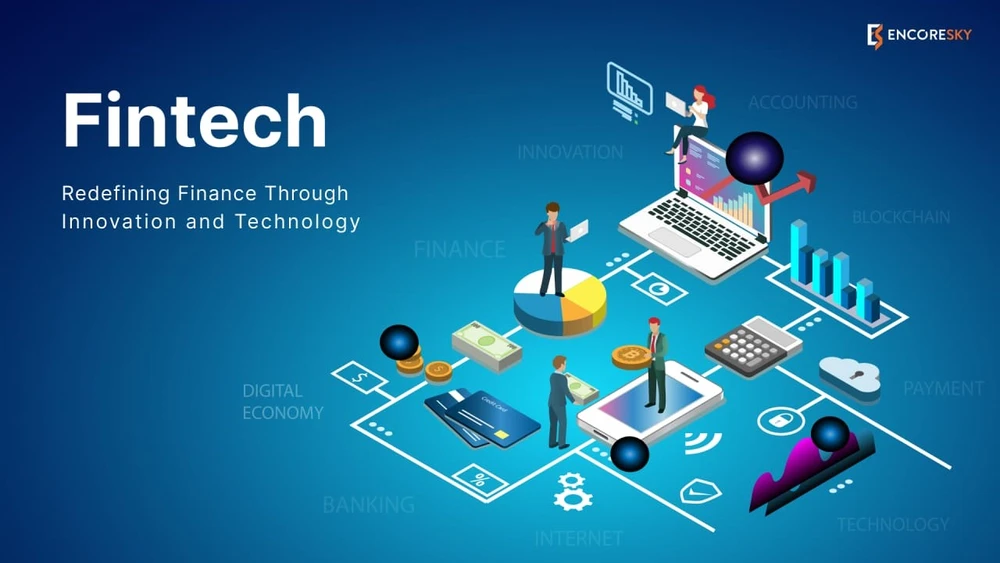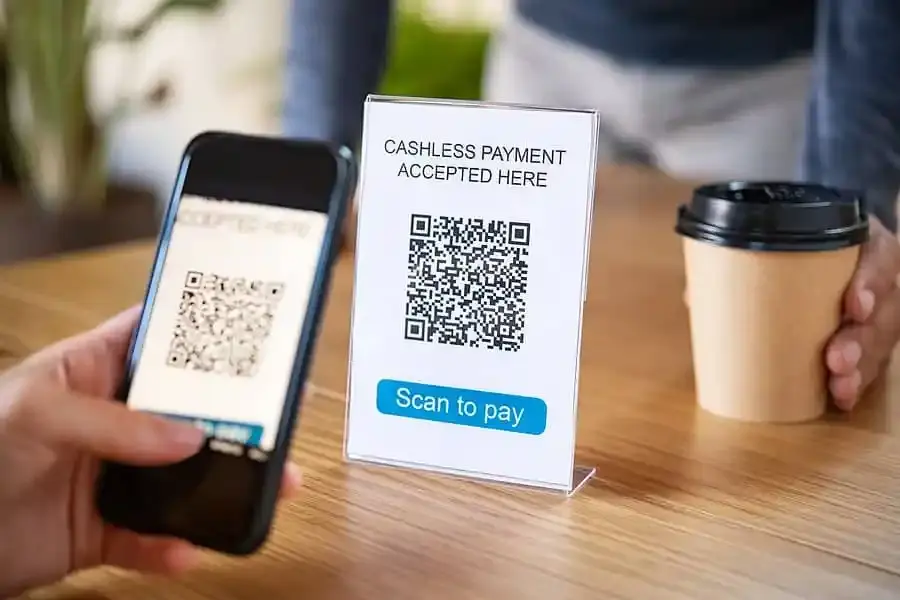Discuss fintech apps’ principal functional sectors and critical characteristics, such as banking without a face-to-face meeting, payment systems, investment solutions, and InsurTech. Features & Key Functional Areas of Fintech Apps. A list of Fintech Apps to consider emerging trends shows that the Fintech industry is growing to become more diverse and complex. As such, Fintech Development Companies are bound to evolve. From mobile applications in banking to ensuring the Blockchain and other cryptocurrencies, fintech apps are revolutionizing how users engage with services.
This article goes deeper to look at the specific functional activities of these apps and find out the most important aspects that contribute to their importance in today’s financial world.
Key Functional Areas in Fintech Apps
Various kinds of fintech apps exist, spanning from payment services to personal finance tracking, investment platforms, and digital lending offerings. Key capabilities of a financial app usually encompass bank account oversight, executing online transactions, fund transfers, and managing budgets. Particularly among individuals under 40 years old, there is an overwhelming preference for digital banking options within fintech solutions—a staggering 78% favor this mode.

The broad scope and multifaceted nature of these functional domains underscore the expansive reach and utility that fintech apps provide. Delving deeper into each domain can shed light on their distinctive characteristics and the advantages they bring to users.
Digital Banking Solutions
Mobile banking apps enable individuals to monitor their transactions and control their finances with ease. These applications, designed by financial institutions or independent developers, emphasize user convenience and robust security measures while granting round-the-clock access to users’ financial resources. Neobanks – banks that operate exclusively online without physical branches – particularly cater to underserved segments of the population through these apps.
Noteworthy examples of such neobanks include Chime, known for offering early paycheck advances up to two days sooner than traditional methods and providing overdrafts without any fees. As well as Revolut which offers a platform where customers can handle money in various forms including trading and investing in cryptocurrencies. Digital banking tools from these innovative entities serve targeted needs within the market.
Payment Processing and Transfers
It is increasing the speed and efficiency of the financial transactions charged through touchless payments such as including QR code payments. Generally, the possibilities for transferring money have greatly expanded and are no longer limited to international players, which are Payoneer, Wise, PayPal, and Revolut. Mobile payment applications have won the hearts of so many people due to the recent increase in money transfers across international territories. Apps specialized in payment processing provide swift and secure transfer of money, which garners high user satisfaction due to the ease provided by these mobile services. Exploring how AI is used in FinTech reveals the sophisticated systems behind fraud detection, automated risk-assessment workflows, and smarter transaction monitoring. For instance, Venmo focuses predominantly on peer-to-peer transactional services that cater mainly to a millennial audience.
Traditional payment applications are designed with functionality for both receiving and making payments effortlessly to facilitate seamless financial exchanges.
Investment and Wealth Management
Wealth management apps focus on understanding user needs to provide suitable investment solutions. These apps create and manage investment portfolios while facilitating access to financial markets. Robo-advisors, a segment of wealth management apps, utilize intelligent algorithms for investment management.
Man-made intelligence and AI calculations break down information contributions to give customized speculation counsel. Automation and AI help track investments and analyze market trends, enhancing the user experience.
Popular robo-advisors like SigFig, Robinhood, and Wealthfront exemplify the features and functionality of these platforms. Millennials show a strong preference for investment apps due to their disdain for traditional financial institutions.
Cryptocurrency Platforms
Cryptocurrency apps are vital components in the realm of digital finance, serving as indispensable instruments for managing the complexities of this developing sector. These applications facilitate engagement with virtual currencies in everyday transactions and provide a range of services, including platforms for crypto exchanges, investment opportunities, and wallets supporting multiple cryptocurrencies. Apps dedicated to exchanges empower individuals to convert traditional fiat currency into various forms of cryptocurrency.
Through these applications, individuals can transfer and secure their cryptocurrencies reliably. Possessing an understanding of how to craft a cryptocurrency wallet is key when offering a thorough suite of options for cryptocurrency apps. Certain crypto wallets employ blockchain technology which bolsters security measures while promoting clarity within transactions. Some crypto applications take it one step further by seamlessly integrating with some different income tax tools, which can be quite useful to cryptocurrency owners who transact in cryptocurrency frequently.
Insurance Technology
InsurTech, which stands for insurance technology applications, is revolutionizing the way the insurance sector operates by employing advanced technologies to enrich customer interactions. These apps harness the power of big data and artificial intelligence to deliver tailored policy offerings, thus increasing service personalization. With AI-driven analytics and integration with the Internet of Things (IoT), InsurTech software platforms can craft individualized insurance policies based on precise risk assessments.
These applications come equipped with features that allow users to personalize their policies, file claims effortlessly, modify coverage as necessary, and seek advice from live agents when needed. To ensure a superior experience for users, navigating these processes must be simple and efficient. This requires a design focus on an intuitive user interface (UI) coupled with a clear visualization of every step in the process. Working with an experienced insurance software company enables insurers to develop these custom interfaces that guide users seamlessly through policy management.
The scope of InsurTech is broad-ranging, encompassing several varieties of insurance including but not limited to property coverage, pet protection plans, and life assurance schemes.

Essential Features of Fintech Applications
Robust security measures are essential for safeguarding user data and preventing fraud in fintech apps. User experience is significantly enhanced through features like intuitive interfaces and real-time analytics.It is increasing the speed and efficiency of the financial transactions charged through touchless payments such as including QR code payments.

Generally, the possibilities for transferring money have greatly expanded and are no longer limited to international players, which are Payoneer, Wise, PayPal, and Revolut. Mobile payment applications have won the hearts of so many people due to the recent increase in money transfers across international territories. Coordinating these fundamental highlights empowers fintech applications to offer a consistent client experience and construct client trust.
Robust Security Measures
It is imperative to implement rigorous security measures for the protection of user data and the preservation of confidence in fintech solutions. The adoption of robust authentication mechanisms, including multi-factor verification and biometric recognition, substantially minimizes the possibility of unwarranted entry. Continual security evaluations coupled with adherence to best practices such as secure software development and regular audits are vital for defending user information.

Financial institutions along with fintech firms must fortify their platforms against cyber threats vigorously. In an industry that’s rapidly evolving, like the fintech sector, embracing advanced technologies along with state-of-the-art security strategies is mandatory. These precautions do more than shield users. They also bolster the trustworthiness and dependability of offered fintech services.
Seamless Payment Gateway Integration
Payment gateways serve as critical conduits for safe internet transactions, enabling various methods of payment essential to the operation of a fintech app. In fintech applications, their chief role is to streamline the process by which money is sent, received or transacted online. Essential integrative aspects for these apps comprise establishing connections with either bank APIs or payment processing entities.
For incorporating payment features within fintech apps, services like Stripe, PayPal, Zelle, and direct bank API interfaces are commonly leveraged. These third-party APIs allow swift addition of capabilities such as accessing consumer financial data and handling payments.
Leveraging Stripe’s integration when setting up a payment gateway alleviates the necessity for PCI certification thus making adherence to compliance standards more straightforward. This incorporation promises an improved user experience through secure transfers that are both expedient and seamless.
Real-Time Data Analysis
All fintech applications prioritize real-time analytics, providing users with immediate updates on their financial well-being. Real-time alerts notify users about any new activities or changes within their accounts, thus improving the management of their finances. These apps deliver analyses of spending patterns, transaction frequency, and typical expenditure amounts to assist users in making knowledgeable financial decisions.
Fintech companies utilize Big Data and machine learning to sift through vast datasets for understanding user behavior and forecasting market movements. By employing these sophisticated technologies, fintech applications can present tailored suggestions that enhance user interaction significantly.
Customizable Dashboards
Tailored dashboards in fintech apps offer a personalized approach to financial management, enabling users to set and monitor their unique financial goals. By presenting metrics and data visualizations that can be adjusted according to user preferences, these dashboards facilitate effective tracking of one’s financial performance.
By providing the tools for active oversight of expenses and investments, customizable dashboards increase user involvement with the app. Such personalization fosters a sense of command over one’s finances, thereby promoting sustained engagement with financial activities through the app.
Automated Processes
The integration of automation within fintech applications streamlines transactions to be faster and devoid of errors, markedly improving the satisfaction levels among users. Through employing Robotic Process Automation (RPA), routine tasks in financial technology can become automated, which reduces operational expenses and bolsters efficiency. By delivering services promptly and minimizing mistakes, automation lifts user contentment.
Through embracing automation, advantages such as heightened efficiency, lowered costs for operations, and an enhanced experience for the end-user are achieved.Since the fintech applications use artificial intelligence and machine learning patterns to offer complex services, such applications offer a friendly user interface.
Frequently Asked Questions
What are the key stages in fintech app development?
Every phase of developing a fintech app, including the inception of the idea, analysis of the project, crafting its design, actual development process, rigorous testing procedures, initial launch and subsequent scaling up, is vital for guaranteeing that the application not only functions effectively but also achieves success.
Market research is crucial in the development of a fintech app due to the reasons elaborated below.
Yet, here it becomes clear that market research is one of the key steps in creating a fintech application since it helps define what exactly should be done to hook the target audience and provides valuable insights about the target audience and the competition.
It helps in determining the right direction to follow when developing applications so as to meet the user’s expectations.
What is possible to consider the hallmarks of a fintech application?
It is essential for a fintech app to incorporate strong security protocols, implement smooth transaction systems, deliver immediate data analysis capabilities, present adaptable dashboards for users, and automate operational procedures to promote reliability and effectiveness.Integration of such capabilities can be crucial to enhance the client’s enjoyment while at the same time enhancing the safety of the economic transactions.
How a whole lot does it cost to increase a fintech app?
Developing a fintech app can incur charges from several tens of masses as well as more than one masses of masses of greenbacks, which varies based totally on the app’s complexity, degree of customization, and the incorporation of numerous technologies. It is essential to acknowledge that ongoing maintenance constitutes a vital issue of funding through the years.
What should I consider when choosing a fintech app development company?
It is crucial to evaluate the proficiency, song record, and range of services a fintech app development agency gives to determine if they match the desires of your particular assignment.
Read more: Magento vs WordPress: Which is the Best?